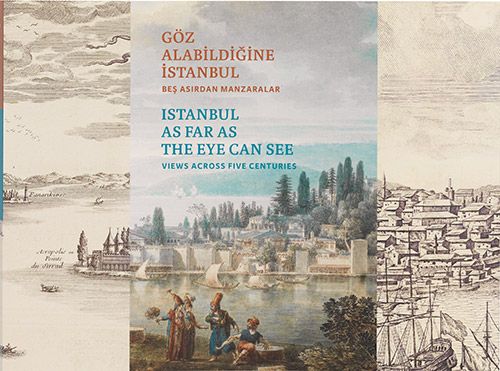Buy or gift a stand-alone digital subscription and get unlimited access to dozens of back issues for just £18.99 / $18.99 a year.
Please register at www.exacteditions.com/digital/cornucopia with your subscriber account number or contact subscriptions@cornucopia.net
Buy a digital subscription Go to the Digital Edition
Views Across Five Centuries
In 1787, when the Scottish painter Robert Barker presented the first “panorama”, a semi-circular view of Edinburgh from Calton Hill, he was taking the first step on the road towards whatwe know today as virtual reality. Barker’s innovation was a concept of his own creation, for which he would receive a patent, and which would allow viewers to inhabit a painting, so that “an observer turning quite round” would see an unbroken view of a city. After displaying this work in Edinburgh, in 1789 he exhibited it in London, and, while creating a full 360-degree London panorama, commissioned a three-storey rotunda off Leicester Square, with viewing chambers where his panoramas would provide spectators with an immersive experience.
Paying the high price of three shillings each to enter, the observers would make their way down a dark corridor before entering a room where props were so arranged, and the canvas so seamlessly positioned, as to create the effect of “wholeness” and to place them “on the spot”, earning Barker a fortune and sparking a craze across London for similar vistas. The first panorama of a foreign city to be installed here was painted by Barker’s son Henry Aston Barker, and presented in 1801. The cleverly lit view, which the young Barker had carefully painted over a period of months in Constantinople in 1799, was more than simply a linear or narrative representation. It was an attempt to allow visitors to inhabit and explore a painstaking portrayal of the city’s neighbourhoods, with details such as ropemaking and other elements of daily life presented as at once familiar and strange.
The Barker panoramas, with their sleight of hand and clever staging, were by their nature illusory. They made a claim to represent reality, but in a way that was theatrical and entertaining. His work sat among the many innovations of his time that would lead eventually to the birth of the camera and cinema, both of which in turn absorbed the logic of the panorama. Like today’s virtual-reality technologies, the project sat somewhere between entertainment and documentary – a more accurate version of reality than painting, but one laden with excitement. Remarkably, the circular interiors survive to this day, within the 1950s church of Notre Dame de France, with three drawings by Jean Cocteau in the Lady Chapel…
1. STANDARD
Standard, untracked shipping is available worldwide. However, for high-value or heavy shipments outside the UK and Turkey, we strongly recommend option 2 or 3.
2. TRACKED SHIPPING
You can choose this option when ordering online.
3. EXPRESS SHIPPING
Contact subscriptions@cornucopia.net for a quote.
You can also order directly through subscriptions@cornucopia.net if you are worried about shipping times. We can issue a secure online invoice payable by debit or credit card for your order.

Cornucopia works in partnership with the digital publishing platform Exact Editions to offer individual and institutional subscribers unlimited access to a searchable archive of fascinating back issues and every newly published issue. The digital edition of Cornucopia is available cross-platform on web, iOS and Android and offers a comprehensive search function, allowing the title’s cultural content to be delved into at the touch of a button.
Digital Subscription: £18.99 / $18.99 (1 year)
Subscribe now